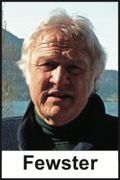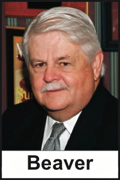Rascals case in brief
In the beginning, in 1989, more than 90 children at the Little Rascals Day Care Center in Edenton, North Carolina, accused a total of 20 adults with 429 instances of sexual abuse over a three-year period. It may have all begun with one parent’s complaint about punishment given her child.
Among the alleged perpetrators: the sheriff and mayor. But prosecutors would charge only Robin Byrum, Darlene Harris, Elizabeth “Betsy” Kelly, Robert “Bob” Kelly, Willard Scott Privott, Shelley Stone and Dawn Wilson – the Edenton 7.
Along with sodomy and beatings, allegations included a baby killed with a handgun, a child being hung upside down from a tree and being set on fire and countless other fantastic incidents involving spaceships, hot air balloons, pirate ships and trained sharks.
By the time prosecutors dropped the last charges in 1997, Little Rascals had become North Carolina’s longest and most costly criminal trial. Prosecutors kept defendants jailed in hopes at least one would turn against their supposed co-conspirators. Remarkably, none did. Another shameful record: Five defendants had to wait longer to face their accusers in court than anyone else in North Carolina history.
Between 1991 and 1997, Ofra Bikel produced three extraordinary episodes on the Little Rascals case for the PBS series “Frontline.” Although “Innocence Lost” did not deter prosecutors, it exposed their tactics and fostered nationwide skepticism and dismay.
With each passing year, the absurdity of the Little Rascals charges has become more obvious. But no admission of error has ever come from prosecutors, police, interviewers or parents. This site is devoted to the issues raised by this case.
On Facebook
Click for earlier Facebook posts archived on this site
Click to go to
Today’s random selection from the Little Rascals Day Care archives….
Click for earlier Facebook posts archived on this site
Click to go to
Today’s random selection from the Little Rascals Day Care archives….
Ritual-abuse theorist played ‘concentration camp’ card
July 12, 2013
“Some professionals take the charges (of satanic ritual abuse) seriously. ‘It’s hard to believe, but so were the reports about Nazi atrocities,’ says Bennett Braun, director of the Dissociative Disorder Program at Chicago’s Rush-Presbyterian-St. Luke’s Medical Center. ‘Then we found the concentration camps.’
“Skeptics are still waiting for the equivalent to a concentration camp to be found. No investigation has ever turned up so much as a bloodstain that could be traced with certainty to these bizarre activities.
“What’s indisputable is the existence of a busy network of therapists specializing in SRA. ‘These allegations are produced by the unrelenting pressure of the therapist,’ says Richard Ofshe, a professor of sociology at the University of California, Berkeley, who studies cults and thought control. ‘You will eventually come up with bizarre stuff because you run out of all the ordinary stuff.’ ”
– From “Rush to Judgment” in Newsweek (April 19, 1993)
As Newsweek’s secondary headline noted, “America is now at war against child abuse. But some recent cases suggest we may be pushing too hard, too fast.” Among the prosecutions criticized was Little Rascals, but by this time both Bob Kelly and Dawn Wilson had been convicted and imprisoned.
Unlike so many others who fomented the ritual abuse/repressed memory/multiple personality mania, psychiatrist Braun actually suffered consequences: He lost his medical license for two years and was among the defendants in a malpractice suit ultimately settled for $7.5 million. He now practices in Butte, Montana.
How one journal editor went very, very wrong
 Dec. 7, 2012
Dec. 7, 2012
Following up on Wednesday’s post:
Here’s how editor Gerry Fewster began his introduction to “In the Shadow of Satan: The Ritual Abuse of Children,” the still-unretracted 1990 special issue of the Journal of Child and Youth Care:
“Putting this issue together has been my most difficult Journal assignment…. It began as a fascinating prospect with little or no supportive documentation. As I discussed the concept with colleagues and friends the most unlikely doors began to open. Fragments of information – odd papers, crude and unfinished manuscripts, unsolicited telephone calls, personal revelations, and even photographs – began to appear….”
Dr. Fewster’s professional skepticism seems to have quickly yielded to those phantasmagoric “fragments of information.” He details an investigative process that….well, evaluate for yourself:
“Many times during the course of reading the material, I decided to quit. I found that I had neither the head nor the stomach for the task…. After spending many hours reading from the protective armor of the editorial role, I would feel physically ill. At first I attributed all of this to my reluctance to examine the depths of my own ‘shadow’ and urged myself on. Then, as my curiosity rekindled, I would shrink back in horror from the spectres of my own hidden motives and intentions….”
Dr. Fewster goes on to introduce his fellow contributors to “In the Shadow of Satan.”
Pamela S. Hudson, for instance, “provides an authoritative wide-angle perspective. Based upon clinical experience and the results of her own survey, the author identifies and discusses the most frequently reported symptoms and allegations surrounding ritual child abuse. Beyond the grisly nature of the content, this seasoned practitioner offers a wealth of insight for those who wish to know about satanic practices and better understand the terrifying experiences of children caught up in this vicious network.”
Hudson’s article isn’t available online, but fortunately is preserved in her subsequent book “Ritual Child Abuse: Discovery, Diagnosis and Treatment.” Here’s an example of the “wealth of insight” provided by “this seasoned practitioner”:
“The exceptional symptom in ritual abuse cases is the sudden eating disorder
demonstrated by these children. Besides being revolted by meat, catsup, spaghetti and tomatoes (which resemble organs), (cf., Catherine Gould) I had a case of a 20-month-old girl suddenly start to throw away her baby bottle. When she was older she said the perpetrator urinated into her baby bottle during his visits with her. Later, she spoke of witnessing the death of a baby girl….”
All this impressionistic pseudoscience could be written off as overreaching silliness, had it not contributed to the moral panic that swept up innocent victims such as the Edenton Seven. Isn’t it time for the editors at those professional journals that enabled the reign of error to at last set the record straight?
‘Attached to their convictions’ – and then some
 Dec. 24, 2012
Dec. 24, 2012
“Why prosecutors sometimes fight post-conviction evidence so adamantly depends on each case. Some legitimately believe the new evidence is not exonerating.
“But legal scholars looking at the issue suggest that prosecutors’ concerns about their political future and a culture that values winning over justice also come into play. ‘They are attached to their convictions,’ (says Brandon Garrett, a law professor at the University of Virginia), ‘and they don’t want to see their work called into question.’ ”
– From “The Prosecution’s Case Against DNA” in the New York Times Sunday Magazine (Nov. 25, 2011)
“Attached to their convictions,” indeed. Nancy Lamb was so attached that in 1996, after Bob Kelly’s 99-count conviction was overturned, she rummaged around the office and turned up yet another molestation claim – this one from two years before the Little Rascals arrests.
Gerald Beaver, Kelly’s attorney, pointed out that the law requires any report of sexual abuse to be investigated immediately and called police investigator Brenda Toppin, who testified that she had told Lamb about the claim in 1992. Lamb denied any recollection of Toppin’s comment.
“All of this ‘We care about the children’ kind of went down the drain after the conviction,” Beaver said. “It was only when (Kelly) successfully appealed and was no longer pulling 12 consecutive life sentences that the state felt compelled to go out and find this witness.”
As usual, however, time proved no object for prosecutors dedicated to making life miserable for Little Rascals defendants. It would be 1999 before they dropped the final charge against Bob Kelly.
McCrory fosters NC’s own costly moral panic

martinsvillebulletin.com
Ben R. Williams
May 29, 2016
“It’s easy to whip people into a frenzy over a moral panic (such as ‘satanic ritual abuse’ in the 1980s). All you do is tell people there’s a vast segment of humanity that wants to prey on their children. You tell them that these predatory people aren’t like us – they’re outsiders with different values. And you make sure that the talking heads on TV keep the story alive.
“Is it possible that a moral panic could happen today?
“Just ask Gov. Pat McCrory, who has cost his state millions of dollars defending a law that allegedly protects North Carolina children from transgender bathroom-goers – a statewide crisis that suddenly popped into existence during an election year, conveniently enough.
“Moral panics still exist, and they’re still absurd. The only difference is, they’re a lot more expensive than they were back in the ’80s.”
– From “History warns us to beware of ‘moral panic’ ” by Ben R. Williams in the Martinsville (Va.) Bulletin (May 27)
![]()











0 CommentsComment on Facebook